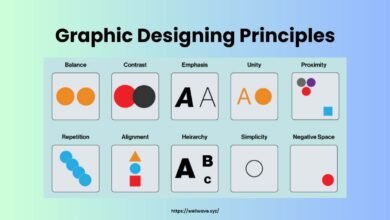Regularizer Machine and Deep Learning: Focused learning in 2025
Regularizer Machine and Deep Learning

Table of Contents
Regularizer Machine and Deep Learning, Deep learning has revolutionized the field of artificial intelligence, offering powerful tools for solving complex problems in areas like image recognition, natural language processing, and autonomous driving. But with any powerful tool comes a challenge, and the most significant challenge is overfitting. It is here that regularization plays its role as a critical mechanism to improve the performance and reliability of deep learning models.
Understanding Regularizer in Machine and Deep Learning
Definition of Regularizers
Regularizers: Techniques used in preventing overfitting in models. Overfitting occurs in learning as the model ends up fitting into the training data; it captures noises and fluctuations which do not hold for new or unseen data.
Role of Regularizers in Deep Learning
Regularizers add a penalty on the size of the coefficients, which discourages the model from fitting the noise in the training data. Usually given results is counted as simpler model that helps to perform better on unseen data, enhancing ability of our model to generalize.
Types of Regularizers
L1 Regularization
Advantages:
- Encourages sparsity, making the model more interpretable.
- Useful in feature selection.
Disadvantages:
- Can be less stable compared to L2 regularization.
L2 Regularization
Advantages:
- Tends to produce more stable models.
- Decreases the model complexity.
Disadvantages:
- Does not induce sparsity; therefore, less interpretable models are produced.
Dropout Regularization
Definition and Mechanism
Dropout regularization is the random dropping of units (neurons) and their connections during training to prevent overfitting.
Advantages:
- It significantly reduces overfitting.
- Improves model performance.
Disadvantages:
- Requires careful tuning of dropout rate.
- May slow down the training.
Follow Us: Well Wave
How Regularizers Improve Deep Learning Models?

Reducing Overfitting
Regularizers are important in avoiding overfitting. This is done by adding some form of complexity penalty that forces the model from fitting the noise in the training data.
Improved Generalization
The regularization makes the model generalizable by making it simple enough for new data which it has never seen, thereby enhancing its deep learning applications.
Practical Use of Regularizers
Regularization techniques improve the performance of models in numerous frameworks. Within deep learning frameworks such as TensorFlow and PyTorch, adding regularization is fundamental to enhance model robustness and accuracy.
Case Studies: Regularizer Machine and Deep Learning
Regularization of Image Classification
The dropout regularization method has played an important role in improving the precision of models while performing image classification tasks. Take, for example, AlexNet and VGG networks that are using dropout as a way to overcome overfitting and obtain great performance on the benchmark dataset: ImageNet.
Regularization in Natural Language Processing
Regularization plays a significant role in NLP to avoid overfitting of large language models. Dropout and L2 regularization techniques help build good generalizing models for text data.
Limitations and Challenges
Over-regularization
If too much regularization is applied, it can lead to underfitting, where the model is too simple to capture the underlying patterns in the data.
Computational Costs
Regularization techniques, in particular dropout, add extra computations at training because of the necessity to randomly drop units and their connections.
Emerging Trends in Regularizer Machine and Deep Learning
Advancements in Regularization Techniques
There is continuous development of new regularization techniques to find a balance between model complexity and performance. Techniques such as variationally dropout and adaptive regularization are receiving increasing attention due to the ability to adjust the strength of regularization dynamically.
Combination with Other Machine Learning Approaches
The combination of regularization with other machine learning strategies, such as ensemble learning and transfer learning, is promising for further improving model robustness and accuracy.
Conclusion

One thing that can simply not be achieved without the set of regularization, an essential set in the arsenal of deep learning. These regulate models, being complex enough so they do not make things overly cumbersome for overfitting to enable deeper leaning models to serve well for their generalization against unseen data and remain successful with it too. Further innovation will occur that may introduce several much-stronger and viable regularizations through the ages into deep learning capabilities.
FAQ’s about Regularizer Machine and Deep Learning
What are deep learning regularizers used for?
They act as regularizers, preventing the overfitting by penalizing the complexity of the model in such a way that it may generalize better towards new data.
What do you consider main differences between L1 and L2 regularization?
The L2 penalty added is equal to the square of the coefficient’s magnitude to stabilize and minimize the complexity.
Dropout regularization – How does this effect neural networks?
Dropout regularization decreases overfitting by randomly dropping units during training, forcing the network to learn more robust features.
Can regularizers be combined?
Yes, combining regularizers, such as using both L2 regularization and dropout, can result in better results by addressing different aspects of model complexity.
What are the common pitfalls when using regularizers?
Common pitfalls include over-regularization, which can result in underfitting, and increased computational costs during training.
Read More: Enterprise Resource Planning Systems




